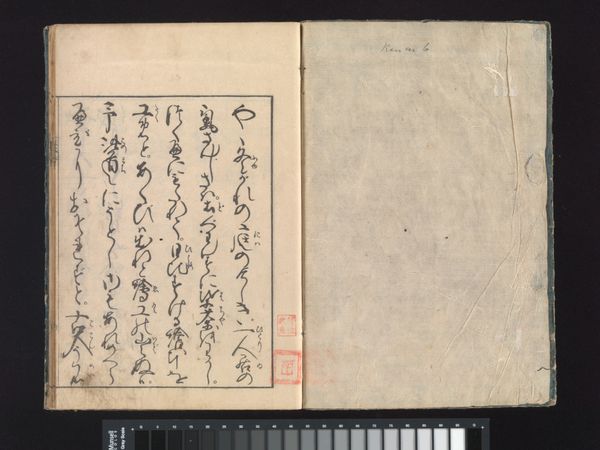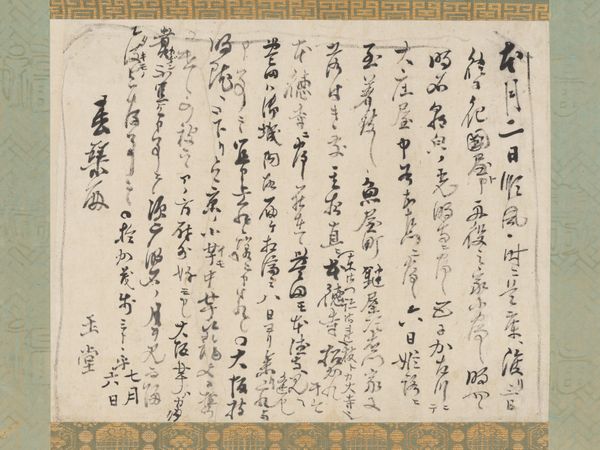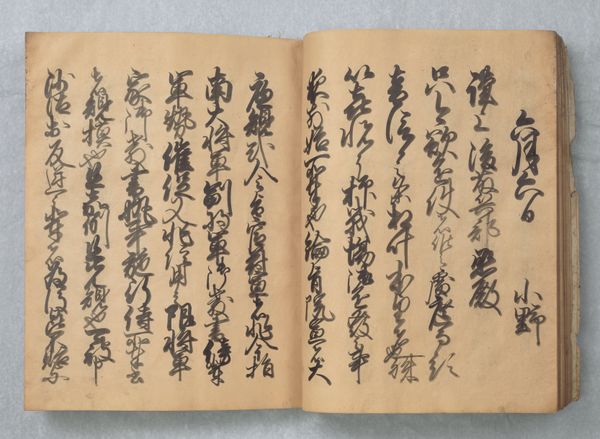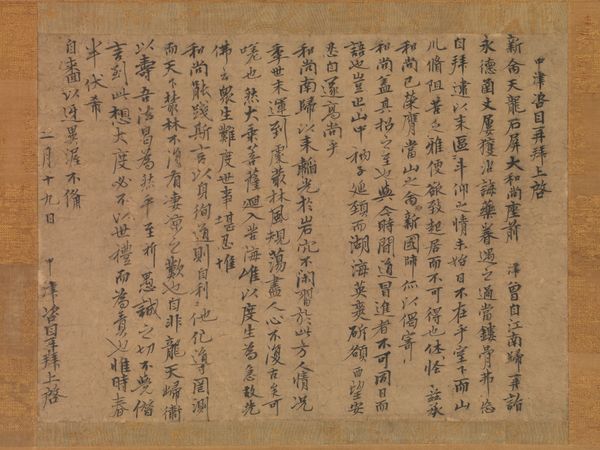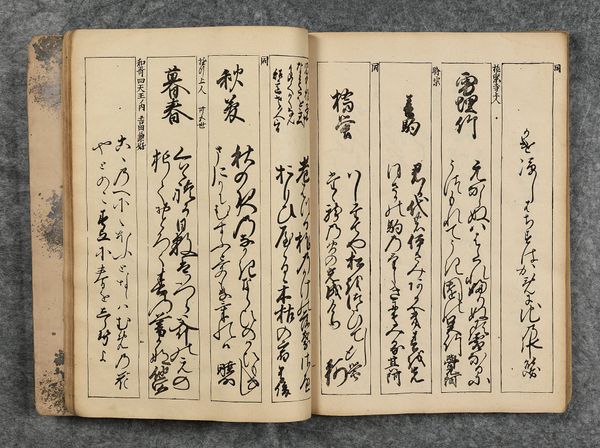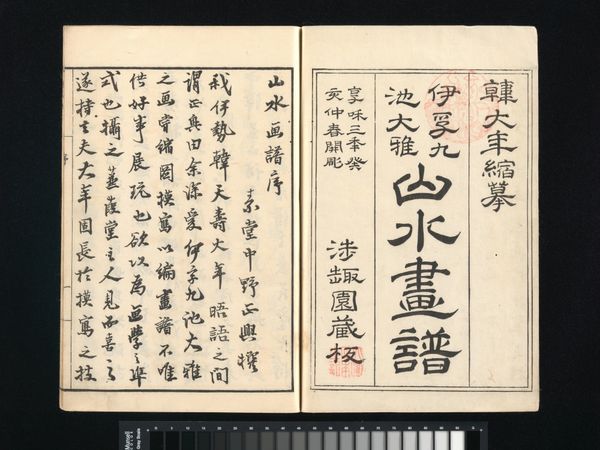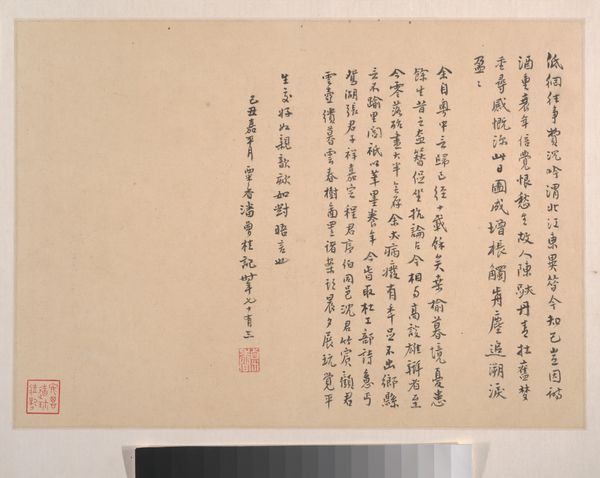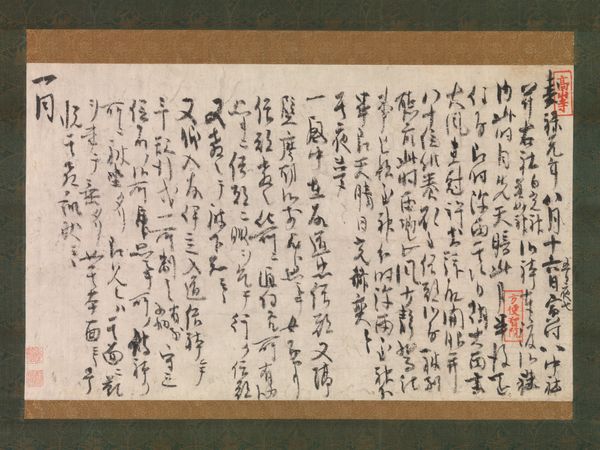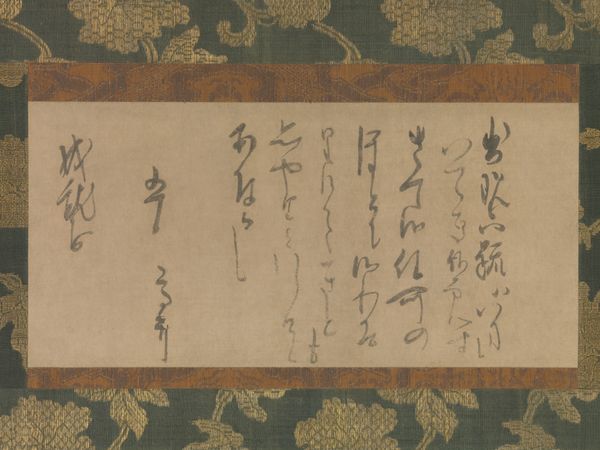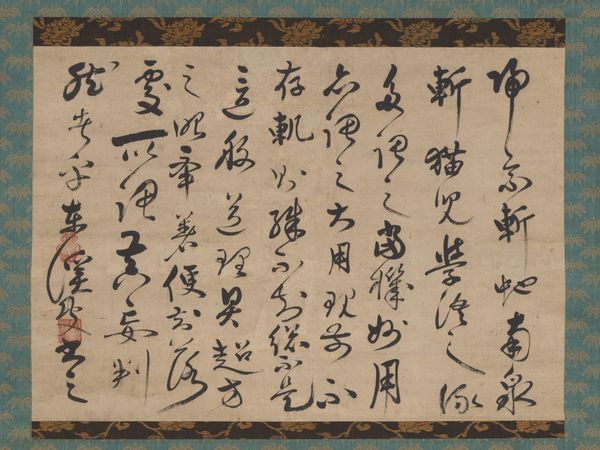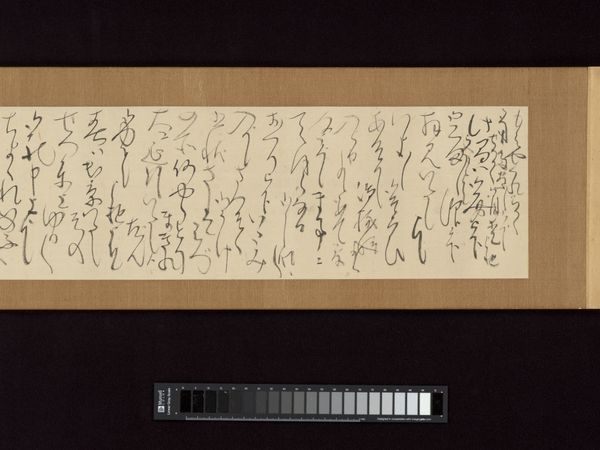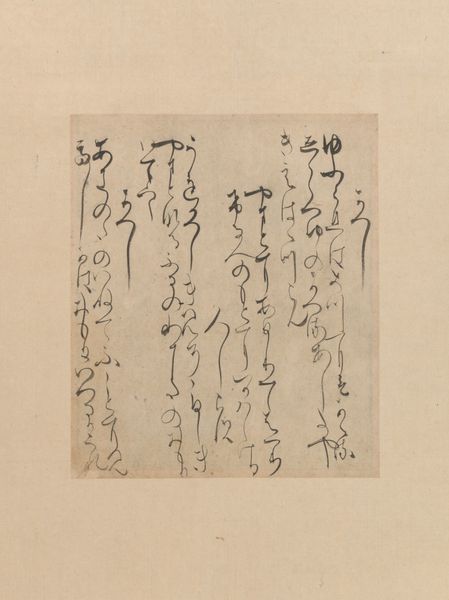
Manuscript Version of “Fundamentals of Poetic Composition” (Eiga taigai), compiled by Fujiwara no Teika (1162–1241) 1531
0:00
0:00
drawing, paper, typography, ink, pen
#
drawing
#
type repetition
#
pen drawing
#
asian-art
#
hand drawn type
#
japan
#
paper
#
a lot of detail
#
typography
#
ink
#
hand-drawn typeface
#
thin linework
#
23_muromachi-period-1392-1573
#
ink and pen line
#
pen work
#
pen
#
historical font
#
columned text
#
calligraphy
Dimensions: Image (closed): 10 1/4 × 7 1/16 in. (26 × 18 cm)
Copyright: Public Domain
Editor: Here we have a manuscript from 1531, titled "Fundamentals of Poetic Composition" compiled by Fujiwara no Teika, though this version was created later by Konoe Taneie. It’s ink on paper, a beautiful example of typography, but frankly, it just looks like scribbles to me. What’s so important about this handwritten text? Curator: Ah, but look closer! To me, it sings a song of dedication. Can you imagine the focus, the hours spent meticulously copying and studying this guide to poetry? Each stroke is a testament to the power and beauty of language, of tradition handed down. Do you get a sense of the kind of cultural weight calligraphy might carry? Editor: I suppose so. The "scribbles" as you call them do look pretty intentional and neat when you think of them as deliberate strokes… But what about the *content*? Is it just rules, like a poetry textbook? Curator: More than that, I think. It's a window into the soul of the poet, an echo of a bygone era. It’s an act of preservation, keeping Teika’s wisdom alive through meticulous transcription. You can imagine someone connecting with an artistic legacy centuries-old, one stroke at a time, and wonder… Are we making that kind of effort today? Editor: So, it’s not just about the rules, it's about the reverence for poetry itself. I hadn’t considered it that way. Curator: Exactly! Art exists beyond its immediate utility. We feel its worth by asking questions of it, just like we’ve done here. Editor: Right, I definitely feel more attuned to that now! I thought it was just another old document, but there is deep meaning there!
Comments
No comments
Be the first to comment and join the conversation on the ultimate creative platform.
